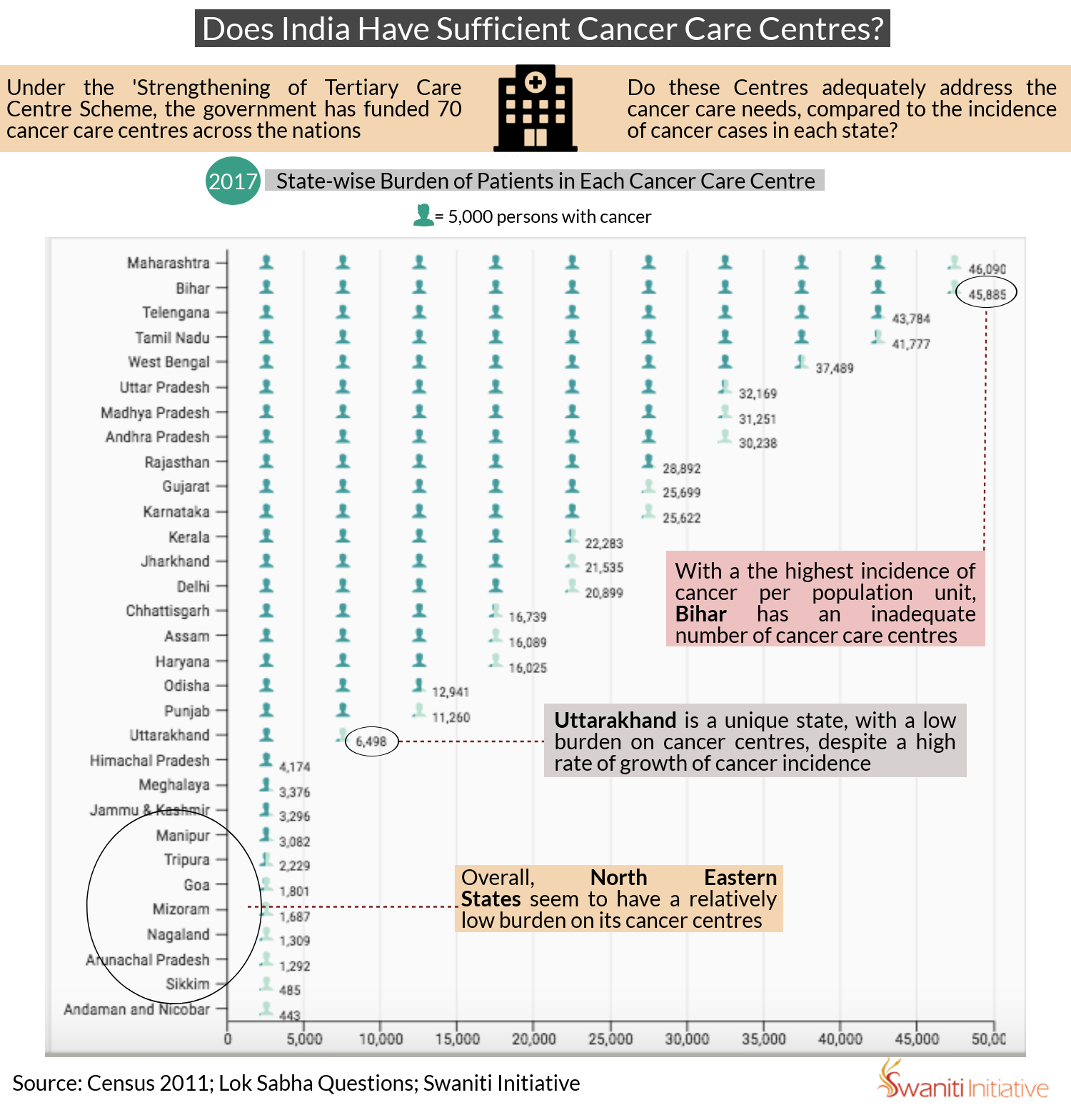In this context, it is useful to examine the prevalence of cancer in India and take stock of the efficacy of response systems designed for checking the spread of this disease. As the first infographic on cancer incidence shows, Uttar Pradesh leads in the number of cases registered, at 2.57 lakhs, while Sikkim has the lowest number of cases, at 485 in the year 2017. 12 out of every 10,000 Indians are affected by some form of cancer or the other with Bihar registering the highest prevalence rate in the population at 13 persons per 10,000. Nagaland has the least prevalence rate, at 7 people per 10,000 affected by cancer. This is not an isolated case; over the years, there has been a steady rise in cancer prevalence in India. Between 2014 and 2017, the rate of growth was 14.25% nationally. Among the states, Kerala has witnessed the highest rate of growth of cancer at 18.7% while Nagaland has registered the lowest rate, at 1.63%. None of the states have registered a decrease in the rate.

